Palacio Real de Aranjuez
Jump to navigation
Jump to search
Royal palace of Spain | |||||
| Upload media | |||||
| Instance of | |||||
|---|---|---|---|---|---|
| Part of | |||||
| Location | Aranjuez, Community of Madrid, Spain | ||||
| Architectural style | |||||
| Architect | |||||
| Owned by | |||||
| Heritage designation | |||||
| official website | |||||
 | |||||
| |||||
| The Royal Palace of Aranjuez (Spanish: Palacio Real de Aranjuez) is a residence of the King of Spain, located in the town of Aranjuez, Community of Madrid, (Spain). The palace is open to the public as one of the Spanish royal sites. It was commissioned by Philip II and designed by Juan Bautista de Toledo and Juan de Herrera, who also designed El Escorial. It was completed during the reign of Ferdinand VI by the mid-18th century; Charles III had two wings added to it. The huge gardens, built to relieve its royal residents from the dust and drought of the Spanish meseta using the waters of the adjacent Tagus and Jarama rivers, are Spain's most important of the Habsburg period. The Jardín de la Isla is on a man-made island bounded by the River Tagus and the Ría Canal. The Jardín del Príncipe contains a miniature palace (the Casa del Labrador, built for Charles IV) and the Museo de las Falúas Reales, housing the most important extant collection of Spain's royal pleasure barges. The Concierto de Aranjuez is a composition for classical guitar and orchestra written by Spanish composer Joaquín Rodrigo, who was inspired by the palace gardens. The work attempts to take the listener through sounds of nature in and around the gardens during the period in which it was written. |
Palace[edit]
[[:Category:Exterior of the Royal Palace of Aranjuez|LangSwitch Error: no default]][edit]
Main facade[edit]
Estatua del rey Fernando VI de España.
Estatua del rey Felipe II de España.
Interior[edit]
Collection[edit]
Paintings[edit]
El sitio de Maastricht (1579). Obra anónima.
Cristo crucificado, de Anton Raphael Mengs. Ca. 1765-1768.
Carlos IV de España, por José de Madrazo. 1825.
El rey Alfonso XII de España, por Manuel de Ojeda y Siles. 1884.
El rey Alfonso XIII, por José Villegas Cordero. 1906.
.jpg/230px-Palacio_Real_de_Aranjuez_(5).jpg)

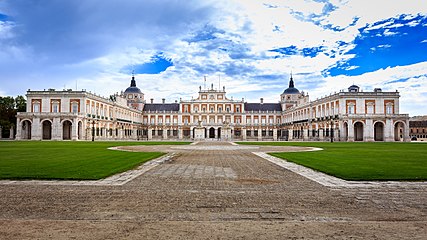




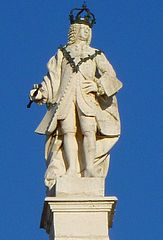

.JPG/320px-12_Aranjuez_(42).JPG)

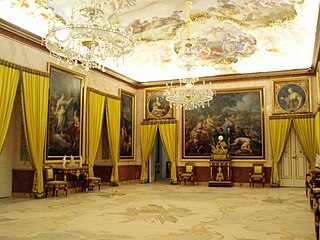
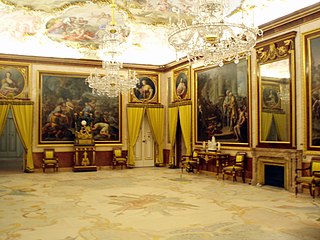
.JPG/320px-12_Aranjuez_(41).JPG)

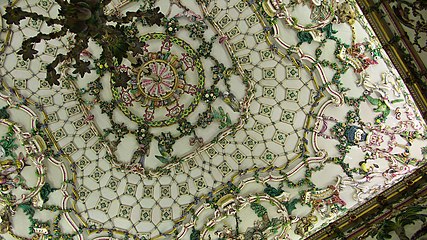

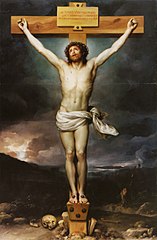
.jpg/194px-José_de_Madrazo_-_Carlos_IV_(Palacio_Real_de_Aranjuez%2C_c._1825._Óleo_sobre_lienzo%2C_115_x_93_cm).jpg)
.jpg/147px-Retrato_de_Alfonso_XII_con_uniforme_de_gala_(Palacio_de_Aranjuez).jpg)
.jpg/128px-Retrato_de_Alfonso_XIII_(José_Villegas_Cordero).jpg)